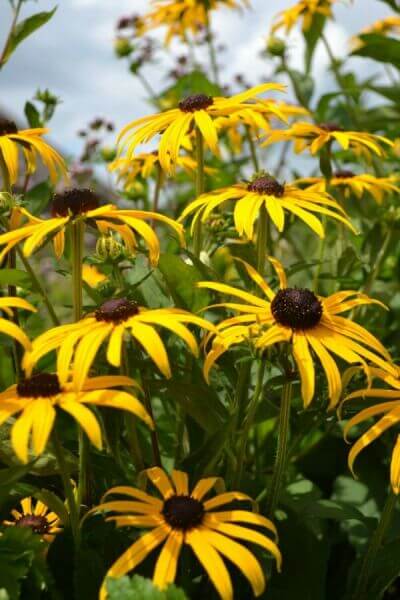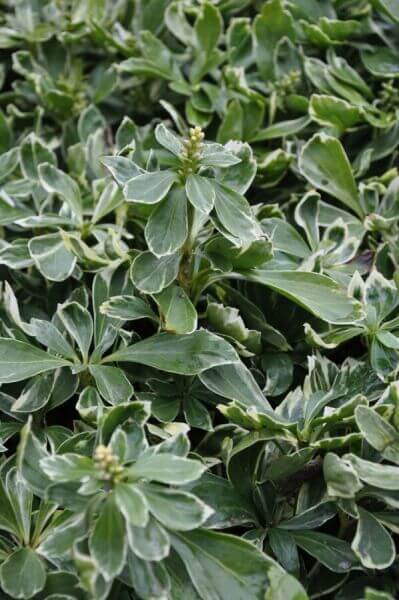Hedge Plants For Container Hedges
Hedge Plants For Container Hedges
Blog Article
Hedge Plants For Porch Edges
Boost your garden's appeal with lush hedge ranges such as Yew (Taxus), Thuja, Laurel, Photinia, and Bamboo, commemorated for their structural integrity and ecological benefits.
Yew and Thuja offer evergreen protection and winter season resilience, while Laurel uses rapid development and broad, fragrant leaves.
Photinia includes seasonal appeal with its lively red foliage, and Bamboo lends a low-maintenance, tranquil atmosphere.
These hedges enhance air quality, lower noise, and create tranquil, private areas.
Correct planting, spacing, and maintenance make sure energetic growth and ecological consistency.
Explore how these lush varieties can raise your garden's appeal and wellness.
Secret Takeaways
Transform Your Garden With Lush Hedge Ranges
- Select Yew for its thick, evergreen development and unparalleled longevity.
- Opt for Laurel for its quick growth and broad leaves, making sure fast privacy.
- Pick Photinia for its dynamic seasonal foliage, which turns a striking dark red.
- Utilize Bamboo for a low-maintenance, winter-hardy hedge with visual appeal.
- Space plants 2-3 per meter and prune regularly for ideal growth and health.
Popular Hedge Plants
When transforming a garden with lush hedge varieties, it's important to think about popular hedge plants such as Yew, Thuja, Laurel, and Photinia due to their special qualities and advantages.
Yew (Taxus) is extremely respected for its durability and dense, green development, making it a prime option for withstanding landscapes.
Thuja is kept in mind for its evergreen foliage and robust winter resilience.
Photinia adds seasonal vibrancy with red leaves that darken gradually, creating vibrant visual appeal.
Laurel provides fast development and aromatic, broad leaves, suitable for quick privacy.
Furthermore, Bamboo is an outstanding option for atmosphere, providing a low-maintenance, winter-hardy alternative that improves the garden's visual with its classy, swaying walking sticks.
These selections deal with a range of horticultural requirements and choices.
Advantages of Garden Hedges
Garden hedges use a multitude of benefits, making them a valuable addition to any landscape. These natural barriers are economical to execute and provide considerable wind security, improving air flow and contributing to sound decrease. The dense foliage of hedges like Thuja and Beech ensures personal privacy by blocking visibility, creating a secluded and tranquil environment.
Hedges likewise play an essential function in microclimate guideline, supplying a stable environment that promotes plant growth and decreases temperature level changes. Their intricate leaf structures filter contaminants, enhancing air quality and contributing to a much healthier garden community.
Furthermore, hedges master sound reduction, taking in and deflecting acoustic waves to lower ambient sound levels. This dual performance of providing both acoustic and visual personal privacy improves the overall serenity and aesthetic appeal of any garden.
Planting and Maintenance Tips
For an effective hedge, precise preparation of the planting location is important. Guarantee the soil has proper pH and drain to support strong root development.
Space the plants properly for the picked types. Water the hedge regularly throughout its preliminary growth phase, changing as required with seasonal changes.
Implement a systematic bug control and illness prevention technique, using chemical or organic treatments when needed. Routinely examine for aphids, mites, and fungal infections.
Apply mulch to keep moisture and suppress weeds. Seasonal pruning promotes thick development and air blood circulation, necessary for plant health.
Following these standards will assist you cultivate a lively, well-maintained hedge that enhances the appeal of your garden.
Spacing and Cutting Standards
Spacing and Trimming Guidelines
Correct spacing and cutting are essential for cultivating healthy, aesthetically appealing hedges. Appropriate spacing ensures each plant receives enough nutrients, light, and airflow.
Follow these guidelines for optimum hedge upkeep:
- Spacing: Position hedge plants 2-3 plants per meter to encourage robust development.
- Pruning Methods: Regular pruning is necessary for preserving desired hedge height and shape. Cut new development in summertime and cut back older wood throughout winter season.
- Seasonal Care: Adjust cutting approaches and schedules according to seasonal requirements to guarantee plant health.
- Hedge Height: Frequently screen and cut to preserve the wanted hedge height and accomplish consistent aesthetic appeals.
Abiding by these steps will guarantee your hedge thrives, boosting both the appeal and functionality of your garden.
Selecting the Right Hedge
Picking the Right Hedge
Choosing the proper hedge involves assessing aspects such as mature height, foliage density, and environmental durability. Effective hedge plant selection requires comprehending each types' growth qualities and site-specific flexibility.
For instance, Yew (Taxus) offers outstanding durability and thick development, while Thuja is notable for its winter durability. Furthermore, thinking about Article source upkeep requirements is crucial; fast-growing species like Laurel or Privet demand regular trimming, whereas low-maintenance choices like Bamboo or Ivy might be more effective for those looking for very little maintenance.
Ecological aspects such as soil type, light schedule, and wetness conditions need to likewise assist the choice procedure. This mindful technique makes sure the picked hedges will prosper, supplying both visual and practical benefits to the garden landscape.
Shipment and Planting Recommendations
To ensure your hedge plants thrive, they should be delivered by specialized carriers and planted without delay upon arrival.
Follow these necessary actions for successful planting:
- Soil Preparation: Enrich the soil with raw material to enhance drain and nutrient content.
- Planting Depth: Create a trench two times the width and equivalent to the depth of the root ball.
- Watering Techniques: Water completely after planting, keeping the soil regularly damp but not filled.
- Mulching: Apply a layer of mulch to retain wetness and suppress weeds.
Customer Support and Service
Given the vital function of timely help in horticultural pursuits, our client assistance group is available 6 days a week through telephone, email, and social networks to provide expert suggestions and quickly address any issues. Their dedication to fast response times makes sure customer fulfillment by dealing with questions related to plant health, optimum planting approaches, and maintenance schedules.

Communication Approach
-------------------
Social network
This detailed support system, reinforced by an excellent 9.3/ 10 client ranking, highlights our commitment to improving the gardening experience for every customer.
Often Asked Concerns
For How Long Does It Take for Hedge Plants to Develop?
Hedge plants generally need one to three years to end up being completely developed, with the precise period varying by types and growing conditions.
Effective care throughout this critical duration is essential for robust growth. Constant watering, vigilant weed control, and suitable fertilizer application are pivotal in promoting strong root advancement.
For example, fast-growing species like Laurel might develop quicker, while slower-growing ranges such as Yew may take longer. Persistent upkeep speeds up the establishment process, leading to healthy and dense hedges.
What Are the very best Hedge Plants for Personal Privacy?
The concern of the very best hedge plants for privacy includes examining evergreen and deciduous options.
Evergreen hedges like Thuja, Laurel, and Cypress provide year-round coverage, guaranteeing constant personal privacy.
In contrast, deciduous hedges such as Beech offer seasonal privacy, shedding leaves in chillier months.
Secret upkeep pointers for personal privacy hedges consist of routine cutting, fertilizing in spring, and correct spacing-- typically 2 to 3 plants per meter.
Additionally, consistent watering and diligent weed removal are essential for promoting healthy, dense growth.
Can Hedge Plants Attract Wildlife to My Garden?
Yes, hedge plants can attract wildlife to your garden by supplying necessary advantages like shelter, food, and nesting websites, consequently improving local biodiversity. Yew, holly, and laurel are exceptional for drawing in birds, while ivy supports a variety of insects.
Nevertheless, it's crucial to keep in mind that there are some drawbacks, such as increased maintenance to handle bugs and routine upkeep. Thoroughly picking and preserving hedge varieties can assist stabilize these benefits and downsides, eventually cultivating a sustainable and vibrant environment in your garden.
Are There Any Blooming Hedge Plants Available?
Yes, there are flowering hedge plants offered that can enhance the appeal of your garden.
For example, Elaeagnus, likewise called Olive Willow, produces aromatic white flowers in the fall, adding a touch of elegance.
Photinia, another popular option, showcases vibrant red leaves that mature into an abundant green, producing a vibrant visual impact throughout the seasons.
To make sure these plants flourish, it's vital to practice appropriate pruning techniques and seasonal maintenance, such as cutting new development in the summer and cutting down in the winter season.
These measures will assist keep the health and aesthetic appeal of your blooming hedges.
How Do I Avoid Pests in My Hedge Plants?
To avoid bugs in hedge plants, employ natural insect control approaches and maintain appropriate hedge care. Present beneficial bugs like ladybugs, which victimize harmful pests, to produce a well balanced environment.
Regularly examine your hedges for indications of problem and promptly eliminate any afflicted parts to prevent the spread. Guarantee the health of your hedges by using well balanced fertilizers and supplying appropriate water.
Utilize mulching to retain soil moisture and proper spacing to decrease plant stress and promote robust growth. These practices collectively help in reducing insect problems and preserving a healthy hedge.
Conclusion
In essence, selecting the best hedge varieties such as Yew, Thuja, and Laurel can transform any garden into a peaceful haven. These plants provide year-round greenery, enhance visual appeal, and deal useful advantages like noise decrease and wind defense.
Appropriate planting methods, accurate spacing, constant watering, and seasonal cutting are crucial for ideal growth.
Trustworthy shipment services and professional customer assistance guarantee a seamless experience from purchase to planting, making it easier than ever to raise your outdoor area.
Garden hedges provide a wide range of benefits, making them an important addition to any landscape. These natural barriers are cost-effective to implement and supply considerable wind protection, improving air circulation and contributing to sound reduction. The thick foliage of hedges like Thuja and Beech guarantees personal privacy by obstructing presence, producing a secluded and peaceful environment.

Pruning Methods: Regular pruning is important for maintaining desired hedge height and shape. Trim brand-new growth in summer and cut back older wood during winter season.
Report this page